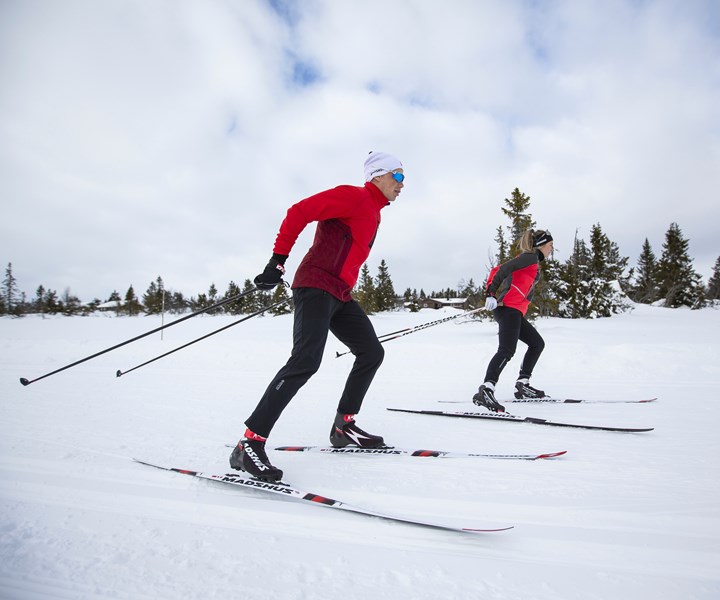Share

Source | Hexcel
Madshus Skis (Seattle, Wash., U.S.) has been building skis since 1906, with its cross-country racing skis appearing regularly in Olympic, World Championship and World Cup races around the world. An early adopter of composites technology for sporting goods, the company first began building fiberglass skis in 1974, and, in a recent collaboration with Hexcel (Stamford, Conn., U.S.), is evolving its ski construction to include the latest developments in epoxy and carbon fiber composites.
One of Madshus’ specifications was that the composite materials for its skis needed to be suitable for the automated production processes it uses to ensure quality, precision and consistency in its skis. The company also needed a competitively priced product that produced less “fuzz” than the company experienced when trying to slit wider tape rolls, and that met tight tolerances for aerial weight and width.
Hexcel’s HiTape products are a range of dry unidirectional (UD) carbon fiber tapes developed originally for use with automated tape laying (ATL) and automated fiber placement (AFP) for out-of-autoclave (OOA) manufacturing of aircraft primary structures. HiTape is manufactured with industrial-grade carbon fiber with aerial weights of 120-250 gsm and widths of 38-47 millimeters. The tapes are constructed from dry fiber tows sandwiched between lightweight thermoplastic veils, which add additional toughness to the finished laminate.
“HiTape gives us exactly what we need for our automated production processes — consistency and quality.”
Especially useful for this application, the tapes are also designed to be free of fiber splices and cut filaments, enabling clean, fuzz-free edges suited to automated production processes. Further, HiTape’s formability and permeability enable rapid material placement and infusion. Hexcel says it is presently delivering nearly 500,000 meters of HiTape per year, with plans to increase its volumes in the near future due to increasing demand from customers.
After initial testing in 2016, Hexcel now supplies Madshus with three HiTape products based on the design parameters of different cross-country ski types, and which are reported to improve ski performance, manufacturing efficiency and surface finish.
“HiTape gives us exactly what we need for our automated production processes — consistency and quality,” affirms Bjørn Ivar Austrem, technical director of Madshus. “In particular, the exceptionally clean edges of the tapes really makes a difference in our molding process and enhances the surface finish of the finished ski.”
Madshus uses resin transfer molding (RTM) to produce its skis. HiTape and a layer of woven glass fiber fabric are lightly fixed to precision-shaped polyurethane (PU) cores before a glass fiber braided sock is passed over the top to secure the reinforcements. This dry fiber ski “blank” is then positioned in a aluminum mold, with the ski’s digitally printed topsheet and low-friction running base, before the mold is closed and the resin is injected.
According to Hexcel, this application demonstrates that HiTape’s benefits can also transfer to high-volume industrial applications and resin transfer molding (RTM) processes. Beyond skis, Hexcel notes that its HiTape products are suited to meet automated production needs in a range of industrial, sporting goods and automotive applications.
Related Content
-
Plant tour: Spirit AeroSystems, Belfast, Northern Ireland, U.K.
Purpose-built facility employs resin transfer infusion (RTI) and assembly technology to manufacture today’s composite A220 wings, and prepares for future new programs and production ramp-ups.
-
Composites manufacturing for general aviation aircraft
General aviation, certified and experimental, has increasingly embraced composites over the decades, a path further driven by leveraged innovation in materials and processes and the evolving AAM market.
-
Plant tour: Airbus, Illescas, Spain
Airbus’ Illescas facility, featuring highly automated composites processes for the A350 lower wing cover and one-piece Section 19 fuselage barrels, works toward production ramp-ups and next-generation aircraft.


.jpg;width=70;height=70;mode=crop)














